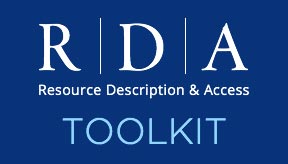RDA Lab Series Preview with Instructor Kate James

As we anticipate the start of the RDA Lab Series on Tuesday, June 30th, we thought you’d like to virtually meet its presenter a little early. Kate James, a cataloging expert and former RDA Steering Committee Examples Editor, tells us about herself and her goals for the upcoming webinars in this feature Q&A. You can hear more from Kate about all things RDA during the series – which is scheduled to run every Tuesday at 2 PM CDT until December 8, 2020.
Individuals can register on the ALA Store website, and groups can contact elsmarketing@ala.org to register.
Recordings will be available to all registrants, including those unable to attend the live presentations.
- Tell us about your experience in cataloging and your role in the development of RDA specifically.
My first professional cataloging experience was at Hill Memorial Library, Louisiana State University. There I cataloged individual manuscripts and collections. From 2003-2011, I was a cataloger at the Library of Congress. I primarily cataloged rare books and modern monographs in Romance languages. I have used an “alphabet soup” of cataloging standards that is too long to list now, so I will just say that I have experience with other descriptive cataloging standards besides AACR2 and RDA.
I became involved with RDA in 2010 as one of LC’s testers for the U.S. RDA Test. In 2011, I transferred to the Policy and Standards Division at LC where I became heavily involved with preparing for LC’s RDA implementation and RDA development. Some of my RDA-related duties included serving as the back-up to the LC rep to the JSC, writing LC-PCC PSs, classroom teaching, writing training documents, and answering emails that were sent to an LC account set up specifically to answer RDA questions from other libraries.
Around the same time, I also became the chair of a JSC examples working group. That evolved into the position of RDA Examples Editor, and I became a member of the JSC (and then RSC). I was the Examples Editor 2013-2019. As the Examples Editor, I was responsible for the examples in the English-language version of RDA as well as some “full record” examples of RDA in MARC created as a training aid. Then the 3R Project happened, and I had the opportunity to reinvent the examples format based on feedback I received from the original RDA examples. So, I developed the different types of examples that are in the beta Toolkit. Beyond the examples, I think my main contributions to the 3R Project were with back-end development because of my XML experience. I also helped plan the RDA Preconferences at ALA Midwinter and Annual the past few years.
- What was the genesis of the RDA Lab Series?
Jamie Hennelly, director of ALA Digital Reference, called me about a rough idea for a new webinar that would be more of a “hands-on” approach to the new RDA. He asked me if I would be interested in teaching this, and we tossed around a few ideas on the phone. Then I sat down and thought about the most important concepts in new RDA for catalogers to understand, and those became the topics of the six modules. I suggested calling it the “RDA Lab Series” to signal that these would be more practical than theoretical.
- How would you explain the 3R Project in a 30 second elevator pitch to a cataloger unfamiliar with it?
It is the break from AACR2 we thought would happen back in 2010 when RDA was first released. It is cataloging for a linked-data environment if you have the technology to support that. It is an acknowledgment that there is not one “right way” to describe a resource–there are different approaches that work for different agencies and different user communities.
- How does the RDA Lab Series accommodate different experience levels?
Since none of the participants have ever used the application profiles I created for modules, everyone will be a beginner when doing the exercises. The Lab Series explains concepts with a minimum of references to original RDA and no references to AACR2, so this helps to alleviate any confusion from new catalogers who do not have that background. It also does not assume any expertise with languages, resource formats or specific vocabulary encoding schemes.
- What knowledge is assumed for those participating in the workshops?
Participants should have a working knowledge of RDA structure and terminology. I suggest that all participants watch the RDA Concepts playlist on the RDA Toolkit YouTube channel, regardless of experience with original RDA. The videos are all under 15 minutes.
Participants should be able to use the beta Toolkit, including logging in, searching, and navigating. I suggest that participants watch the videos on those subjects in the Beta Site-Toolkit Training playlist.
- Tell us about the application profiles you created for the RDA Lab Series. What criteria did you use for creating them?
Most of the application profiles (APs) will be in the beta Toolkit as contributed documents. This is how an agency might create their APs if they do not have policy statements, and I would imagine that an agency with policy statements in the Toolkit might also have a contributed document application profile for certain types of resources. The RDA Lab APs are based around the topic of the module, e.g., the Persons module is an AP that only has instructions on Persons elements. There are also different APs for different types of manifestations—that is pretty common because some elements that would apply to an audio disc would not apply to a print monograph.
Because the RDA Lab Series cannot simulate an integrated library system, some application profile choices (e.g., recording method) reflect the reality of the learning environment rather than the choice that might be best for data management. However, the AP decisions about entities described and elements recorded reflect those often considered important by libraries for their current catalogs. When appropriate for the module, the APs do reflect RDA’s Guidance: Coherent description of an information resource.
Finally, these APs do go beyond the scope of a traditional AP sometimes simply because I needed to include some instructions that would probably be more likely to be found in policy statements or other cataloging documents like workflows.
- How can each participant use these application profiles in their own institution’s cataloging?
Participants can use these application profiles for ideas about developing APs for their own institutions, but these APs should not be interpreted as recommendations. My hope is that these APs will help participants to make informed decisions about the format for their APs and the decisions that should be included in the APs. I think participants will find it very useful to see metadata created using the Lab Series APs because it shows them the results of applying certain options.
- What are some of the ways that the series addresses new approaches to familiar topics?
The Lab Series gives participants a chance to use RDA without the constraints of a display standard or legacy data. While those factors are important to our real-life cataloging, they sometimes hinder our understanding of RDA. For example, we often have authorized access points that are “RDA acceptable,” meaning they conform to RDA, but they are not the authorized access points we would create if starting fresh with RDA. Having such legacy authorized access points mixed with new ones in the same database may create confusion about what the current practice is.
The best RDA training I got was being the RDA Examples Editor because it was the only time I got to “catalog” with RDA just using the standard itself. That is how I knew which instructions were in RDA, which ones were in LC-PCC PS, etc.
- What are some common misconceptions about RDA and the RDA Toolkit that you expect will be dispelled for participants through the program?
- It is impossible to find anything without instruction numbers.
- There is no way someone will actually be able to catalog anything using this.
- Nomen has no practical value in cataloging.
- What are three things you want to make sure all participants know before the first module is presented?
- The Lab Series will teach you the structure and terminology of the new RDA, but actually cataloging with it has several dependencies including a display standard and cataloging management system that accommodates new RDA, new policy statements, and your own level of general cataloging knowledge. Most importantly, the new RDA will not become official until December 15, 2020. After that, an agency will decide when it starts using the new RDA so you should not start cataloging with it until your agency says to do so.
- There are some concepts in new RDA that will probably not make sense the first time you are presented with them. However, things often click after you have heard the information a few times.
- Do not be afraid to ask questions and say that you do not understand something. No one is an expert in new RDA yet.
